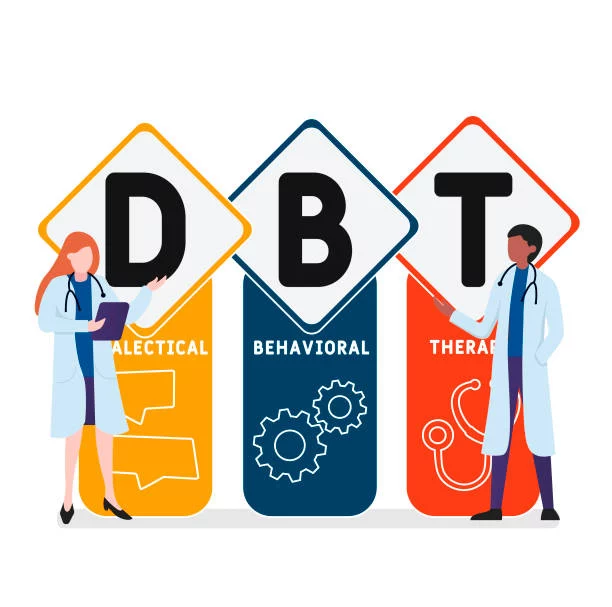Last Updated on July 24, 2025 by Lexy Summer
Mental health challenges can be overwhelming, and finding the right level of care is essential for recovery. While outpatient therapy works for many, others need a more structured yet flexible approach that offers intensive support without full hospitalization. This is where Partial Hospitalization Programs (PHPs) come in. These programs offer a middle ground between inpatient care and traditional outpatient therapy, providing robust mental health treatment during the day while allowing individuals to return home in the evenings.
In this guide, we’ll explore the benefits of PHPs, the therapeutic methods they use—especially dialectical behavior therapy DBT—and a step by step guide to enroll in a partial hospitalization program.
What Is a Partial Hospitalization Program?
A Partial Hospitalization Program is a short-term, intensive mental health treatment option designed for individuals who require more support than outpatient services provide, but who don’t need 24-hour supervision. PHPs are commonly used for individuals dealing with conditions like:
Depression
Anxiety disorders
Bipolar disorder
Borderline personality disorder (BPD)
Eating disorders
Substance use disorders
Patients typically attend treatment sessions five to seven days a week for four to six hours a day. Services offered in a PHP often include individual therapy, group therapy, medication management, and skills training.
How DBT Fits Into PHP Treatment
One of the most effective evidence-based treatments used in many PHPs is dialectical behavior therapy DBT. Originally developed for treating borderline personality disorder, DBT is now widely applied to a range of mental health issues, including self-harm, suicidal ideation, emotional dysregulation, and substance abuse.
DBT is grounded in cognitive-behavioral therapy principles but incorporates mindfulness, acceptance, and dialectical thinking—balancing opposing ideas (such as acceptance and change). It focuses on four core modules:
1. Mindfulness – Being present in the moment.
2. Distress Tolerance – Surviving crises without worsening the situation.
3. Emotion Regulation – Understanding and reducing emotional vulnerability.
4. Interpersonal Effectiveness – Navigating relationships and assertive communication.
Many PHPs integrate DBT into their programming due to its structured nature and measurable outcomes. Individuals attending a PHP that offers DBT can benefit from both individual and group DBT sessions, allowing for more rapid skill acquisition and application.
Step by Step Guide to Enroll in a Partial Hospitalization Program
If you or a loved one is considering a PHP, it’s essential to understand the enrollment process. While the specific steps may vary slightly depending on the provider and location, the general process is fairly standardized. Here’s a step by step guide to enroll in a partial hospitalization program:
1. Recognize the Need for PHP-Level Care
Begin by identifying whether a PHP is the appropriate level of care. Signs you might benefit from a PHP include:
Difficulty functioning in daily life
Escalation in mental health symptoms
Inadequate response to outpatient therapy
Frequent crises or hospital visits
Need for structured treatment without overnight stays
You can speak to a mental health professional, primary care doctor, or emergency department for an initial assessment.
2. Get a Clinical Evaluation
Most PHPs require a comprehensive clinical evaluation before admission. This can include:
Psychological assessment
Physical health screening
Review of medical and psychiatric history
Risk assessments (for suicide, self-harm, or substance use)
This evaluation determines whether PHP is appropriate and helps create a personalized treatment plan.
3. Verify Insurance Coverage
Contact your health insurance provider to check your benefits. Key questions to ask:
Is partial hospitalization covered?
Are there preferred providers in-network?
What are the co-pays, deductibles, and out-of-pocket maximums?
Are prior authorizations or referrals required?
Many PHPs have staff members who can assist with insurance verification and provide cost estimates.
4. Select a PHP Program
Choose a program that meets your clinical needs, aligns with your values, and is logistically feasible. Consider:
Type of therapy offered e.g., does the program include [dialectical behavior therapy DBT?
Program schedule (days/times)
Location and transportation options
Reputation and reviews
Specializations (e.g., trauma, adolescent programs, dual diagnosis)
Don’t hesitate to ask questions or request a tour or consultation.
5. Submit Required Documentation
Enrollment often involves submitting documents such as:
Medical records
Psychiatric evaluations
Insurance information
Emergency contact details
Consent forms and HIPAA releases
You may also need to complete intake questionnaires about your symptoms and treatment goals.
6. Begin the Program
Once admitted, you’ll receive a structured schedule of therapies and services. A typical day may include:
Group therapy sessions (e.g., skills training, process groups)
Individual therapy (often DBT-based)
Medication management with a psychiatrist
Psychoeducation and relapse prevention
Family or couples counseling, depending on the program
Your progress will be continually assessed, and your care team will adjust your treatment plan as needed.
Benefits of PHPs for Mental Health Recovery
Enrolling in a PHP offers numerous advantages:
Intensive care with flexibility: Receive robust support while maintaining home life and routines.
Faster progress: Structured daily treatment accelerates symptom management and coping skill acquisition.
Access to multiple modalities: From DBT to medication management, PHPs provide holistic care.
Supportive environment: Daily interaction with peers and clinicians fosters motivation and connection.
Whether you’re transitioning from inpatient care or stepping up from outpatient therapy, a PHP can be a vital part of the healing journey.
Tips for Succeeding in a PHP
Be honest and open with your care team—they can only help with what they know.
Commit to attendance: Regular participation leads to better outcomes.
Practice skills outside of sessions: Apply DBT tools in real-life situations to reinforce learning.
Build a support system: Involve trusted family or friends if possible.
Set realistic goals: Recovery is a process; celebrate small victories along the way.
Final Thoughts
Mental health challenges deserve specialized, compassionate care—and Partial Hospitalization Programs offer a powerful, flexible solution. With structured therapy like dialectical behavior therapy DBT and personalized treatment plans, PHPs help individuals stabilize, build resilience, and prepare for a successful transition back to daily life.
If you believe this level of care is right for you, follow our step by step guide to enroll in a partial hospitalization program and take the first step toward a healthier future. Don’t wait—help is available, and recovery is possible.
For those seeking a more personalized approach to mental health care, it’s crucial to explore local resources that can provide tailored support. Individuals in Maryland, for instance, can benefit from the expertise of professionals who understand the unique challenges faced by residents. If you’re in the area and need guidance, you can get help from a Maryland therapist who specializes in evidence-based treatments like DBT. This ensures that you receive the most effective care possible, tailored to your specific needs, and can significantly enhance your journey towards mental wellness.

Lexy Summer is a talented writer with a deep passion for the art of language and storytelling. With a background in editing and content creation, Lexy has honed her skills in crafting clear, engaging, and grammatically flawless writing.



